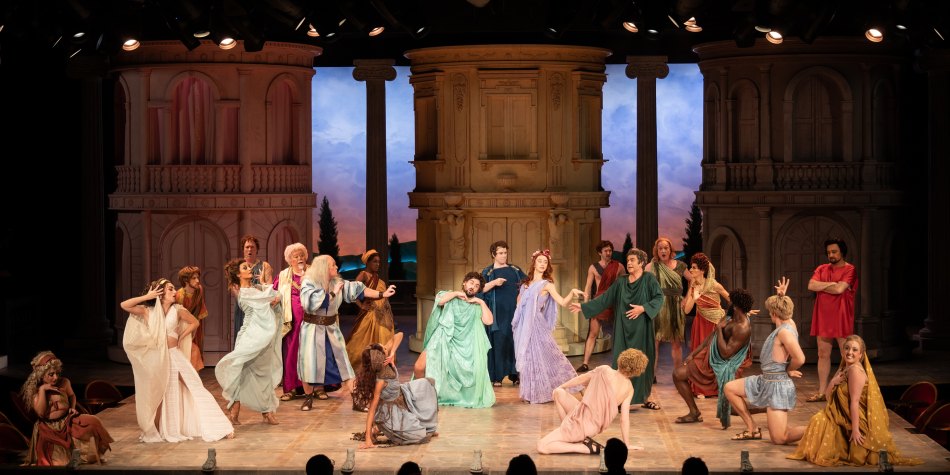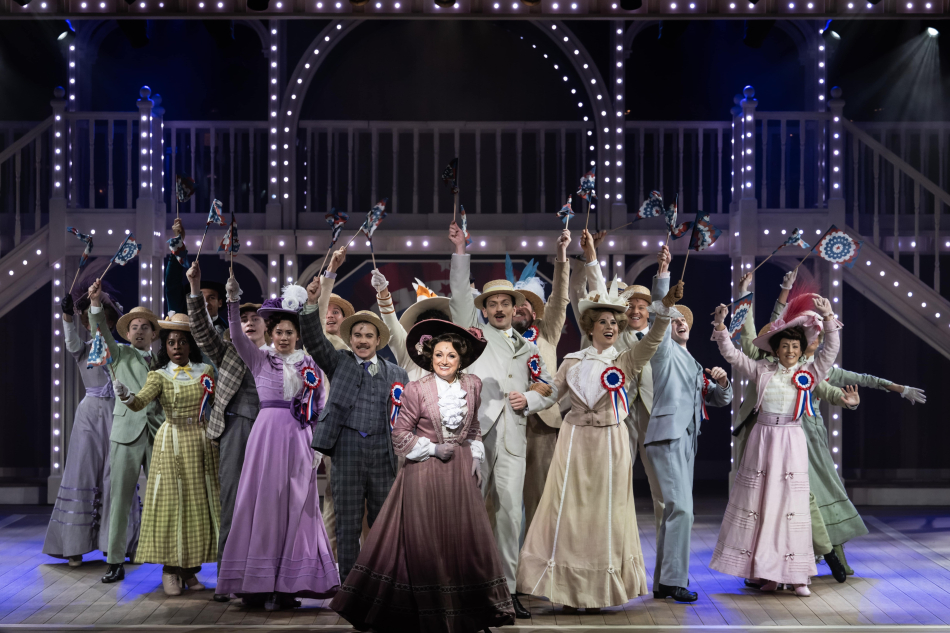
What Are the Different Theatrical Genres and Their Definitions?
Discover the different theatrical genres and styles, from tragedy to farce. Explore their history, key characteristics, and impact on modern theater.
On stage, every work comes to life through a theatrical genre that shapes its rhythm, emotion, and message. But what are the different theatrical genres and their definitions?
From ancient tragedy to contemporary productions, let’s explore the many faces of theater and their impact on the audience. But before that, here is an overview of the different genres we will cover:
| Genre | Definition |
| Tragedy | A dramatic work where noble characters face a tragic fate. |
| Comedy | A play designed to provoke laughter by ridiculing human flaws. |
| Drama | A mix of comic and tragic elements, often centered on human conflicts. |
| Vaudeville | A lighthearted comedy based on misunderstandings and absurd situations. |
| Theater of the Absurd | Works highlighting the absurdity of existence through disjointed dialogues. |
| Farce | A highly exaggerated comedy relying on wordplay and absurd situations. |
| Melodrama | A play emphasizing intense emotions, often with a clear opposition between good and evil. |
Each theatrical genre offers a unique way to captivate, move, or amuse its audience. So, which one will leave the greatest impression on you?
Tragedy
Originating in Ancient Greece, tragedy portrays noble characters facing insurmountable moral dilemmas that lead to a fatal outcome. Works like Oedipus Rex illustrate the essence of this tragic genre, where fate and destiny are inescapable.
This enduring tragic genre continues to shape contemporary forms of theater, including musical theater.
Tragicomedy
A bridge between tragedy and comedy, tragicomedy blends dramatic tension with humor, creating a distinct theatrical form that challenges traditional storytelling. Its characters face serious challenges but often find resolution, offering relief after a critical turning point. Playwrights have long used this art form to make the audience experience both pathos and laughter, as seen in works like “Waiting for Godot” by Samuel Beckett, which is often performed worldwide.
Modern Tragedy
With playwrights such as Jean Anouilh and Jean-Paul Sartre, modern tragedy breaks away from ancient traditions to question the individual’s role in society. No longer dictated solely by fate, it highlights protagonists struggling against oppressive social conditions or existential dilemmas.
This evolution gives the narrative a more contemporary resonance, rooted in internal conflicts and clashes of values.
Classical Tragedy
Formalized by Jean Racine, classical tragedy follows a strict structure where every event inevitably leads to a tragic outcome. It adheres to the three unities—time, place, and action—which heighten both dramatic tension and the intensity of conflicts.
In Ruy Blas by Victor Hugo, protagonists are often torn between passion and duty, inevitably pushed toward their downfall by an inescapable fate.
Comedy
As one of the two main genres in theater, comedy contrasts with tragedy by using sharp dialogue, irony, and absurd situations to highlight human flaws. Whether in romantic comedies or classical plays, this genre has played a key role in the evolution of theater and remains widely presented on stage.

Classical Comedy
Formalized in the 17th century, classical comedy adheres to strict dramaturgical rules, ensuring that events unfold within a clear time and place. Playwrights like Molière, with works such as The Imaginary Invalid and The Learned Ladies, skillfully combined satire and caricature to expose the excesses and absurdities of society. This theatrical genre often relies on exaggerating human flaws and using irony to deliver universal messages.
Comedy of Manners
A reflection of its era, the comedy of manners satirizes the hypocrisies and contradictions of the upper class, particularly the bourgeoisie. Playwrights such as Jean Giraudoux and Alexandre Dumas used this theatrical performance to hold up a mirror to society, offering both critique and entertainment. Its enduring appeal lies in its ability to blend wit and social commentary.
Intrigue Comedy
One of the three types of comedy, intrigue comedy thrives on fast-paced action, intricate subplots, and unexpected plot twists. Built on misunderstandings, mistaken identities, and complex schemes, it draws from popular farce and sophisticated theatrical techniques. These plays, designed to be performed in front of an audience, rely on clever timing and meticulous storytelling to keep spectators engaged.
Its influence is still evident in modern theatrical performances, particularly in the history of musical theater, where it serves as the foundation for many high-energy, fast-paced productions.
Drama
A type of drama that sits between comedy and tragedy, drama explores moral dilemmas and the complexities of human nature. Unlike tragedy, it portrays characters from different social backgrounds, making its narratives more relatable to audience members. Romantic drama, championed by Victor Hugo, broke away from traditional conventions by blending intense passion with dramatic tension, as seen in Ruy Blas.
Vaudeville
A lively blend of theatrical genres and styles, vaudeville is known for its fast-paced energy, clever misunderstandings, and unpredictable twists. Humor arises from exaggeration and surprise, with slamming doors and cascading miscommunications keeping audience members engaged. This carefully orchestrated chaos builds toward the resolution of the play, often incorporating elements of absurdity to heighten the comic effect.
Theater of the Absurd
A popular theatrical genre, the Theater of the Absurd was influenced by existentialist ideas and challenges traditional narrative structures. Inspired by Aristotle’s reflections on drama, this form of drama immerses audiences in a disorienting world where dialogue is fragmented, staging is often minimalist, and logic is deliberately distorted. Through absurd dialogue, repetitive exchanges, and illogical situations, these plays critique social constructs and question the meaning of existence.
Farce
Rooted in medieval theater, farce is a highly exaggerated genre that relies on wordplay, exaggerated situations, and slapstick humor. Characters, often larger than life, become entangled in their own foolishness or clumsiness, creating chaotic and fast-paced comedy. With a mix of comedic and tragic elements, farce thrives on physical gags and over-the-top staging, captivating audiences with its unpredictable nature.
Melodrama
A dramatic form of drama, melodrama amplifies emotions and contrasts between good and evil, often through heightened performances and grand staging. Emerging as a reaction to realism, it focuses on shattered destinies and intense passions, frequently accompanied by music that enhances key moments. While tragedy often leads to despair, melodrama typically delivers a happy ending, restoring balance and justice in the narrative.
If you are passionate about theater and looking for a unique experience, why not attend one of our spectacles at Théâtre du Lido? With a blend of musical theater, spectacular staging, and powerful emotions, our productions reimagine the great theatrical genres to offer you an unforgettable evening on the Champs-Élysées.